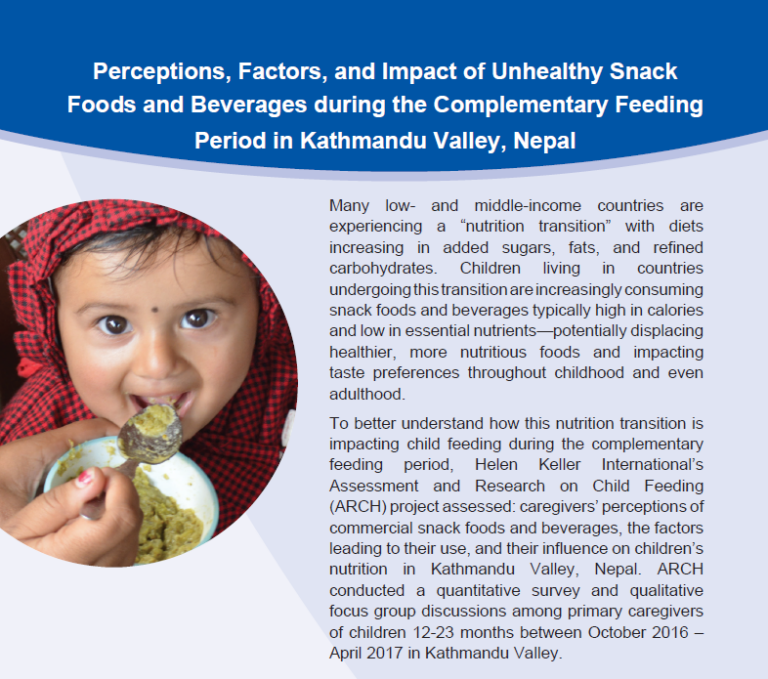This research brief discusses our recent work evaluating consumption of unhealthy snack foods and beverages among children 12-23 months of age in Kathmandu Valley, Nepal.
Key Findings:
- Children in Kathmandu Valley are consuming commercially produced snack foods and beverages at a high rate, the majority of which are “unhealthy” according to their nutrient profile.
- Despite negative perceptions about snack foods, caregivers cite convenience and children’s preference as major drivers for feeding them.
- Unhealthy snack foods and sugar-sweetened beverages contribute to nearly one-quarter of the dietary energy intake for children 12-23 months of age. Nearly half of children’s dietary energy intake comes from snack foods and beverages.
- Children who were high consumers of unhealthy snack foods and sugar-sweetened beverages had lower dietary intakes of 8 micronutrients and had lower length-for-age z-scores as compared to low-consuming children.
- Unhealthy consumption patterns were greatest among populations of lower socio-economic status.
Suggested Citation
Helen Keller International & Ministry of Health and Population Nepal. (2018). Perceptions, Factors, and Impact of Unhealthy Snack Foods and Beverages during the Complementary Feeding Period in Kathmandu Valley, Nepal. Helen Keller International, Kathmandu, Nepal.
View Resource
